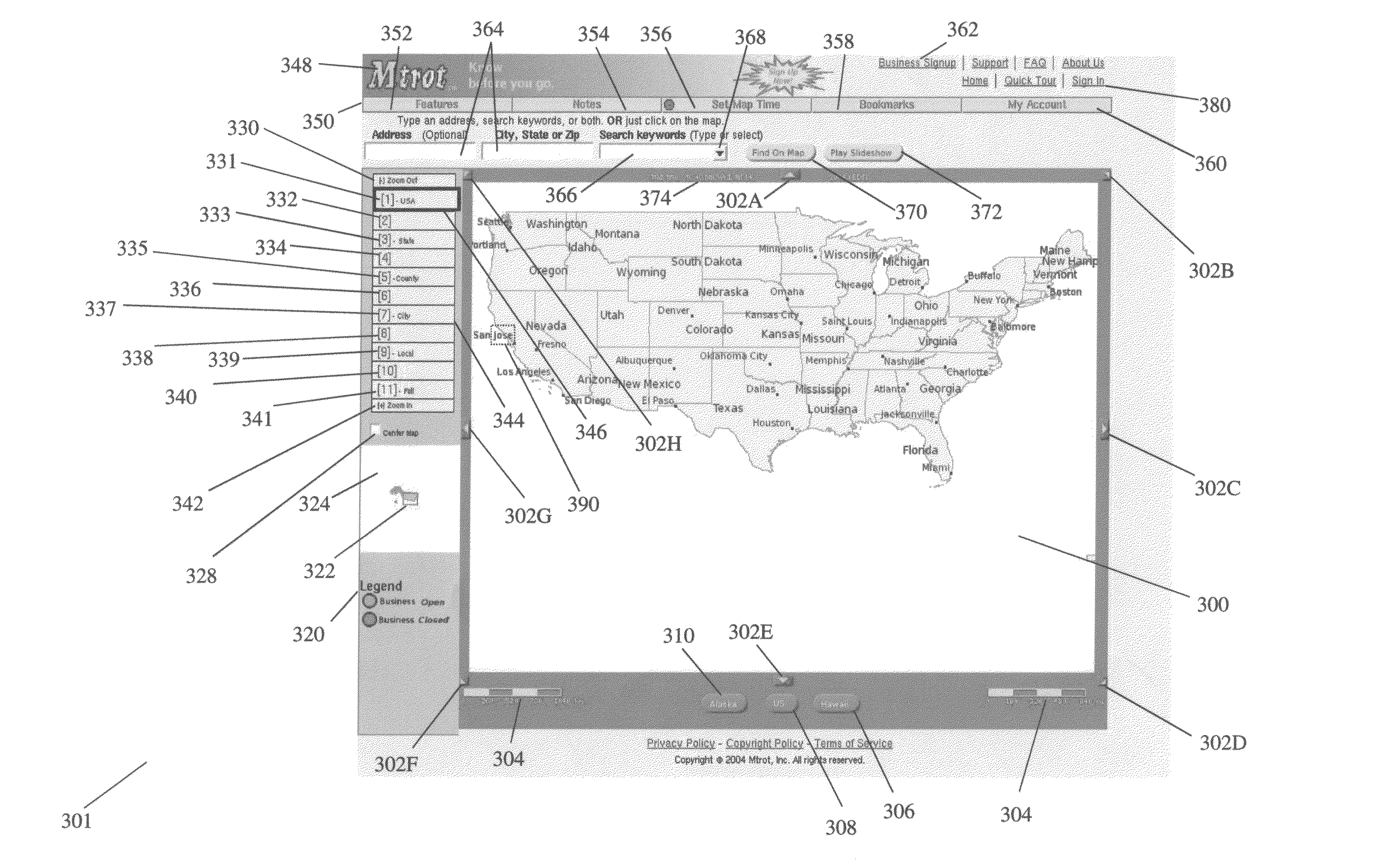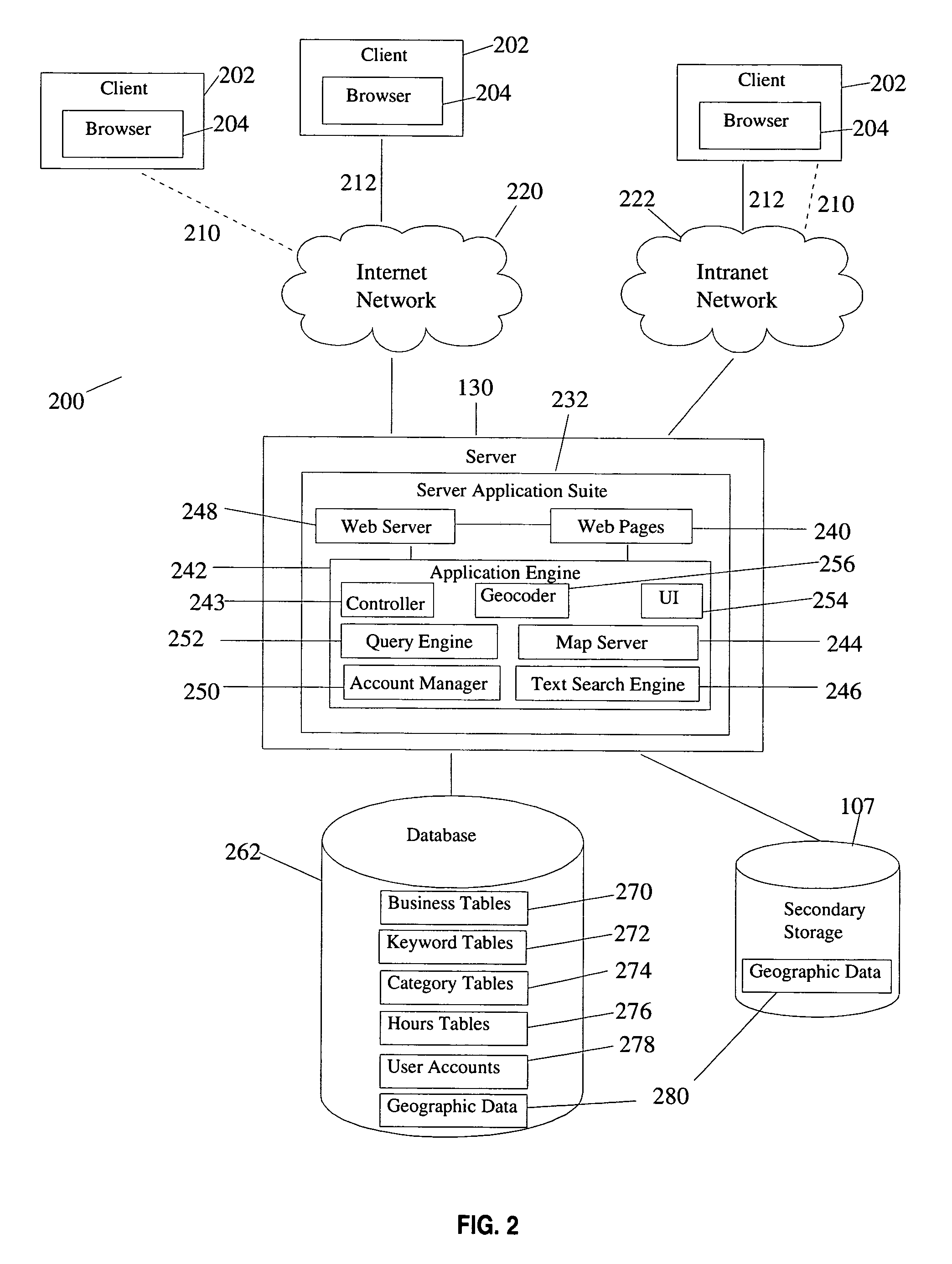System and method for managing and presenting entity information
a technology of entity information and management methods, applied in the field of systems and methods for managing information, can solve the problems of limiting the amount of information provided, limiting the amount of information up to date, and printing yellow pages is not useful for printing news, so as to save time
- Summary
- Abstract
- Description
- Claims
- Application Information
AI Technical Summary
Benefits of technology
Problems solved by technology
Method used
Image
Examples
Embodiment Construction
[0092]Systems and methods for presenting and managing entity information are described. In an exemplary embodiment, the present invention provides systems and methods for managing and presenting information regarding, without limitation, businesses, organizations, groups, individuals, other entities, events, attractions, places, points of interest, objects, or information associated with a physical location (hereinafter referred to as “entity” or “entities”). Such entity information could encompass various entity characteristics, including, without limitation, hours of operation, availability of a product or service, movie show times, concert and festival times and dates, other event occurrences, job availability, apartment openings, hotel vacancies, garage sales, open houses, any information associated with a physical location, or any other information regarding an entity (hereafter referred to as “entity characteristics”). The methods and systems can be implemented on an individua...
PUM
 Login to View More
Login to View More Abstract
Description
Claims
Application Information
 Login to View More
Login to View More - R&D
- Intellectual Property
- Life Sciences
- Materials
- Tech Scout
- Unparalleled Data Quality
- Higher Quality Content
- 60% Fewer Hallucinations
Browse by: Latest US Patents, China's latest patents, Technical Efficacy Thesaurus, Application Domain, Technology Topic, Popular Technical Reports.
© 2025 PatSnap. All rights reserved.Legal|Privacy policy|Modern Slavery Act Transparency Statement|Sitemap|About US| Contact US: help@patsnap.com



